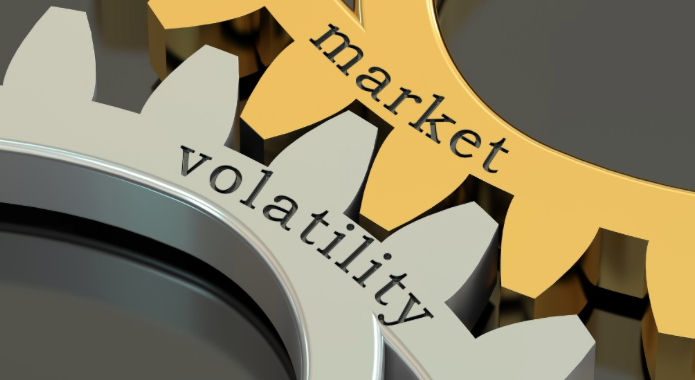A note from Schwab’s Newsroom.
After a fairly steady march into record territory over the preceding weeks, U.S. stocks have now suffered their first pullback of more than 5% since June 2016. And volatility expectations have surged. After plumbing levels far below its long-term average around the beginning of January, the Chicago Board Options Exchange Volatility Index (VIX), a measure of volatility expectations often referred to as the “fear index,” is now double its long-term average. That suggests conditions have changed over the past month.
Several factors appear to be at work here:
- Rising inflation expectations, thanks to accelerating wage growth.
- Rising interest rates (the 10-year U.S. Treasury yield rose above 2.8%).
- A growing market consensus that the Federal Reserve may raise short-term interest rates more than three times this year.
- Investor sentiment, which had become enamored with stocks, has become a contrarian risk factor for the market.
- Potential technical issues related to algorithmic trading programs, possibly triggered by stop orders and/or margin calls on large institutional positions and potentially related to overly large positions in short volatility related products.
Do these losses put the long-running bull market at risk? Probably not, says Schwab Chief Investment Strategist Liz Ann Sonders.
“Pullbacks are normal,” Liz Ann says. “While those exceeding 5% can be very stressful to long-term investors, we are still advising investors to stay the course at this time as long as they have a long-term investing plan in place.”
“While the current selloff has exceeded a normal reversion to the mean after the recent gains, we still think this will be more of a normal correction than a bear market,” she says. “Bear markets—typically defined as a drop greater than 20%—usually occur when stocks begin to anticipate the next recession, which we believe remains in the distance.”
Treasury bond yields have been rising
Ten-year Treasury bond yields have been rising sharply since late last year because of strong economic data, signs of higher inflation and concerns about the Fed tightening policies, says Kathy Jones, chief fixed income strategist for the Schwab Center for Financial Research.
“With the Fed possibly hiking rates three to four times this year and reducing its balance sheet, we expect bond yields to grind higher,” Kathy says. “However, if the selloff in stocks accelerates, Treasury bond yields could stabilize, because investors often see the bond market as a safe haven during times of volatility. Riskier bonds—such as high-yield and emerging-market bonds—are likely to underperform Treasuries if stock markets decline further.”
Potential implications for international markets
Unlike Friday, Monday’s sharp drop across world stock markets was not driven by a particular macro event or economic data point, as evidenced by the absence of similar moves in the dollar or economically-sensitive commodities like copper or gold, says Jeffrey Kleintop, Schwab’s chief global investment strategist.
“The current pullback in global stocks is different from every other pullback that preceded it over the past eight years, because it appears to have been triggered by fears of too much global growth and the return of inflation, not too little growth and deflation,” he says. “An overheating global economy could mean a more rapid shift by central banks to rein in stimulus, often a precursor to recession.”
However, Jeff says a recession does not appear to be on the near-term horizon, and that a pickup in inflation could be good for international stocks.
“In fact, the pace of earnings growth and inflation has moved hand-in-hand, historically,” Jeff says.
The takeaway for traders
While this pullback has been rather disruptive and abrupt, it has thus far fallen short of a full correction—usually defined as a pullback exceeding 10%—and should still be considered a normal move within an extended bull market that has had no significant pullbacks in over 18 months, says Randy Frederick, vice president of trading and derivatives for Schwab.
“Traders should be extremely cautious of continued high volatility and more extreme price swings in the coming days,” Randy says. “While we expect this pullback to eventually create opportunities for those seeking to increase equity exposure, traders should still exercise extreme patience before adding to positions, as there are few signs of capitulation at this point.”
What long-term investors can do now
Markets typically go up and down, and you’re likely to experience several significant declines during a long investing career. It may be healthier for your portfolio if you resist the urge to sell based solely on recent market movements, although that can be emotionally difficult at times.
Every investor is different, but periods of market volatility can also be a wake-up call to review your risk tolerance, make sure your portfolio is adequately diversified or consider adding defensive assets, such as cash or U.S. Treasury securities, for stability. If you don’t have a financial plan, now might be a good time to talk to a planner about creating one. For more information on steps investors can consider during volatile markets, check out “Volatile Markets? Here’s What You Should Know.”
What you can do next
- Market volatility is unnerving, but it’s a normal—and normally short-lived—part of investing. If you’ve built a solid financial plan and a well-diversified portfolio, it’s best to ignore the noise and focus on your long-term goals.
- Want to talk about your portfolio? Give us a call here at Aquinas Capital Advisors LLC, we’d love to answer any questions you may have!

